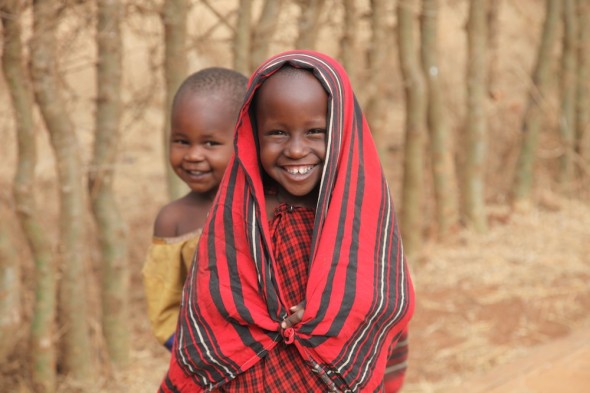
Essentially, my work as a documentary filmmaker specialises in branded content for non-profit, social and environmental development organisations.
The type of projects I choose to be involved in are diverse to an extreme extent, and each experience continues to take me on meaningful adventures around the world. Last month, the location was Kenya and Tanzania (Africa) working for a non-profit foundation from Switzerland, MyClimate.
MyClimate is a facilitator of carbon offsetting. This means, that they partner and fund local organisations in developing nations that are reducing C02. They facilitate the accreditation of carbon credits, buy them from the local partners, then sell them to people around the world who wish to offset their emissions (such as when flying, causing considerable amounts of C02). So the buying and selling of carbon credits is used to support their local project partners all over the world. The mentality that MyClimate is trying to market to the world, is to “do your best… and offset the rest!”.
To get a better understanding of the concept, check out their website introductory video here.
I was sent to Africa to film two of their local project partners, who are reducing C02 emissions by reducing firewood consumption when cooking. Both projects accomplish this by implementing energy efficient cook stoves/clay stove liners – which reduce the amount of fuel needed.
The first project we filmed was with the Tembea Youth Centre for Sustainable Development.
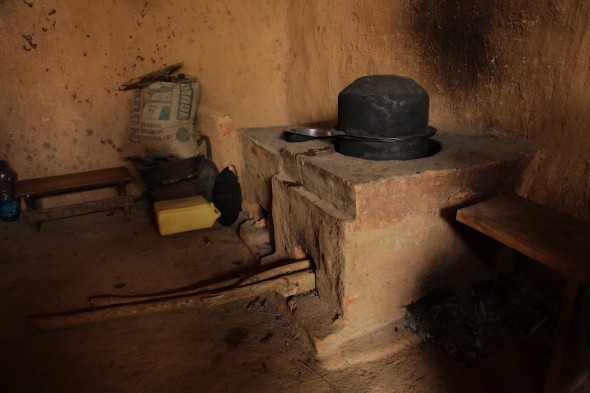
The Tembea efficient cookStove
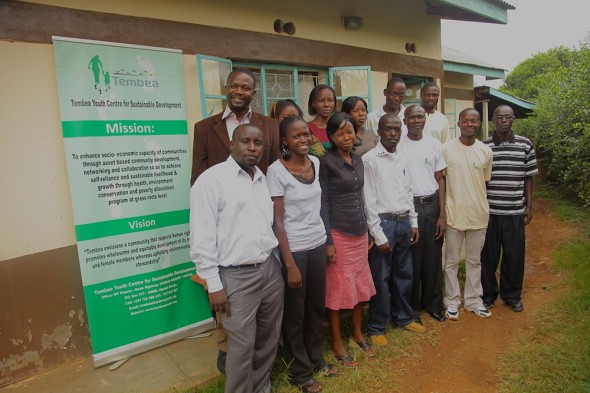
The Tembea Team
Not only did this organisation develop an efficient process for implementing the energy efficient stoves, but they had also worked closely with MyClimate to initiate a number of “womans groups” working with a micro-finance model so all families could afford the stoves.
It was an incredible experience to come and film these powerful women. Once empowered, the potential for social development seemed endless – there were discussions about business development, growth strategy, support networks and investments, all concepts I wasn’t expecting to hear from a room full of mothers in a remote village. I was honoured to be invited to their meetings to film, and excited about the opportunity to share the pride of what they have achieved.
I especially loved the confident and empowered attitude one young mother, who told me to stop filming the exchange of money when they were operating the loans, because she wanted me to film the section of savings. I realised a few moments later, that this was to show off how much she had saved the last few months, as she flashed her Kenyan Shillings in front of the camera…”This is ALL mine…” she said with a cheeky smile, then burst into laughter with the rest of the girls.
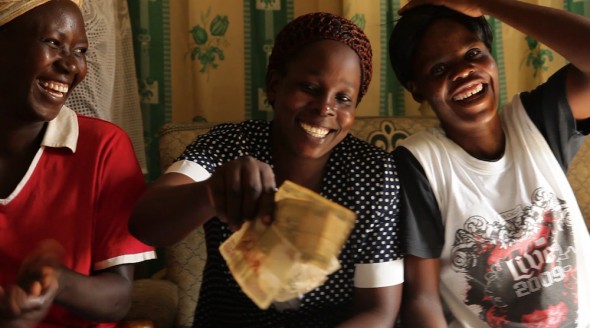
I asked one of the male Tembea staff why men were not involved in the community savings and loaning groups, but was told the process is simply more efficient if their energy is invested into training the women of the community, “after all, they are the ones that really run the place…”. Nice.
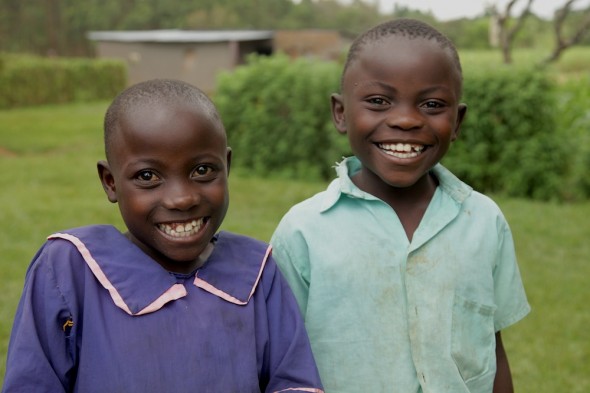
The last day in Kisumu, I got to film the stove in action – and I was blown away.
Normally the families use a 3 stone system, which is basically just an open fire. Severe health issues due to smoke inhalation are common. The amount of firewood needed to sustain the fire is massive, with families and children needing to collect enough firewood for every day. This does not only have an impact of the social condition of the families, (children spending less time at school for example) but it also has a devastating effect on the environment, through the burning and release of C02, and the deforestation of local areas.
The stove is simple mud and brick technology, yet it reduces firewood consumption by 50%, while also reducing or completely eliminating the emission of smoke once the stove is lit. I have such adoration for simple technologies, but this one really had me floored. I found the concept hard to believe at first, using only mud and clay, but that is why I love being a filmmaker – I was able to witness firsthand and document the success of this simple technology.
Once the stove is lit correctly, there really was complete elimination of smoke. It was incredible.
Mud + Clay + Good Design = No Smoke, more jobs, more opportunities…
More trees.
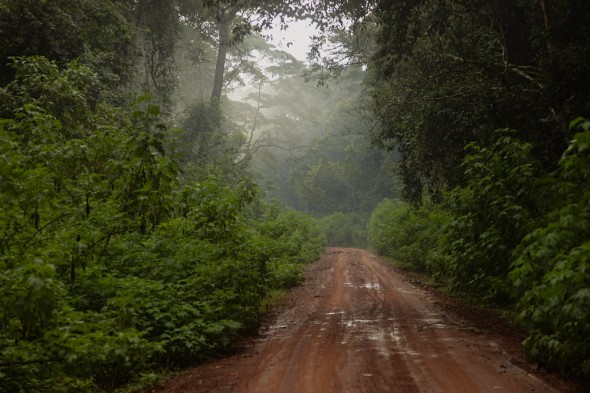
Speaking of trees, the second project we filmed was located on the outskirts of Kenya’s largest and oldest rainforest; Kakamega. This particular project changed my perception of conservation and honestly gave me hope for the future of old-growth forests.
The tenacity and enthusiasm of the youths working in Kakamega was inspiring. Silvia, the young accountant who manages the finances for the “stoves for life” project, was full of ambition and eagerness to see the development of their initiative. Likewise her co-worker Francis, another young man fresh out of university, simply radiated with pride for his work, which you see in our interview when he mentioned:
“… we feel that, whatever we are doing, is somehow noble…”
It is.
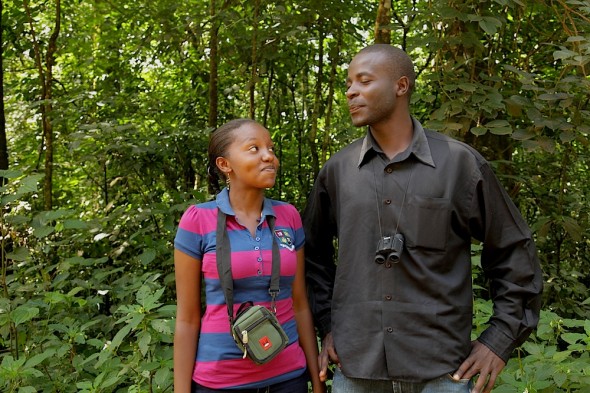
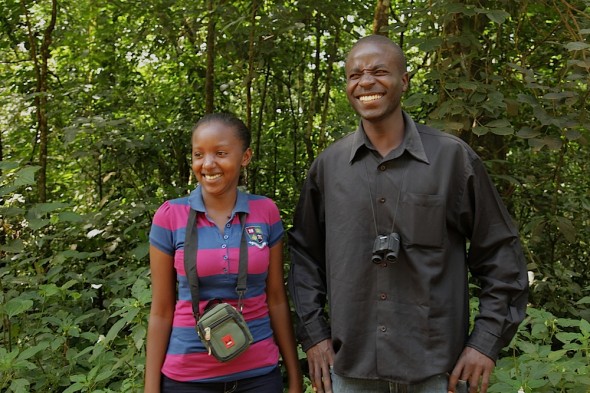
Carbon offsetting, although it might seem small on a local level, is actually one of the most exciting concepts that I have worked on so far. The idea that we can offset our unavoidable impact on the environment through supporting young inspiring people like Francis and Silvia in another part of the world, means everyone now has the opportunity to be an eco-warrior without complete disruption of lifestyle.
But, although these two projects were more than enough for my solo workload, I wasn’t in Africa JUST to film stoves.
Like every good initiative, MyClimate pairs their productivity in climate action with climate education, and so they made time for me to visit their local school program in Nakuru, run by a local girl called Merculine.
Visiting and filming schools is always entertaining, but the children in Nakuru were extra special. They especially loved my light brown soft hair and funny video camera. Songs were sung, laughter roared, hearts were filled with inspiring messages of hope for our future, and everyone had their say on climate change. We had fun.
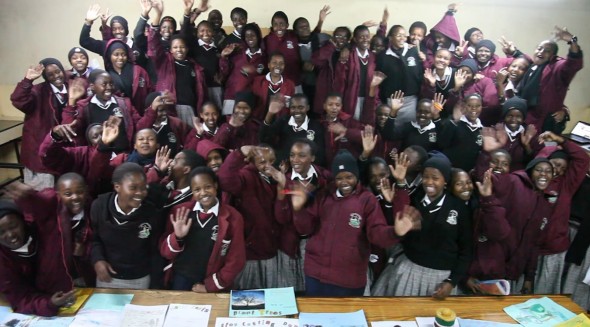
In a typical situation, this would have been the end of my journey. I had been filming for more than 2 weeks, flights were booked, and I was meant to be wrapping up.
However, as usual (in my bizarre and committed work schedule) – plans changed.
I was contacted by MyClimate and Dario Schwoerer, from the TOPtoTOP expedition, who told me that TOPtoTOP (an ongoing project I have been filming for 5 years) had supported a project in Tanzania, which was only one day of travel away from where I was in Kenya. Dario wanted me to head to Tanzania, live with the Maasai, and film an appeal video in support of a Solar Energy Project.
Also supported by MyClimate, (who also work closely with the Swiss TOPtoTOP foundation), I left Nakuru on an epic 16 hour journey into Tanzania.
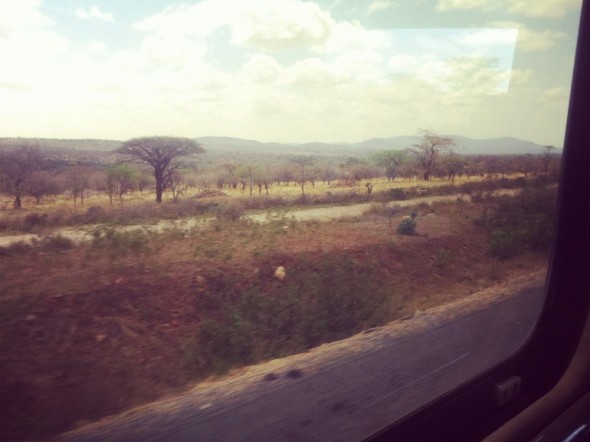
This brings me to my first tip for aspiring travelling filmmakers – bring less of everything, except double the amount of spare batteries, cards & drives.
Living in a yacht and putting a priority on buying gear instead of “stuff” has really helped me to lighten my load. I have 2 bags – a backpack with my film / editing gear, and a duffle bag with a first aid kit, chargers and cables, a sleeping hammock-tent (thanks Jungle Run!), then a pair of jeans, shorts and a couple of t-shirts. I also have a “camera bag” which lives inside the duffle in transit – but holds my DLSR, batteries, Audio Kit, sunscreen and deet when on the road. It’s pretty efficient, light and with only two bags to keep track of, it’s hard to loose one. I always keep my passport and “real” wallet with my hard-drive and cards (I keep a “fake” wallet in my pocket with a small amount of cash I might need on the road).
As soon as I arrive to a filming location the first thing I do is empty EVERYTHING, set up my data-wrangling corner, then re-arrange/pack again in prep for filming. It takes me about 5 minutes – but it’s taken me about 5 years to streamline the process without loosing anything (…except my phone, I’m a serial-phone destroyer… incurable).
So – after packing my 2 bags securely with help from my camera assistant…
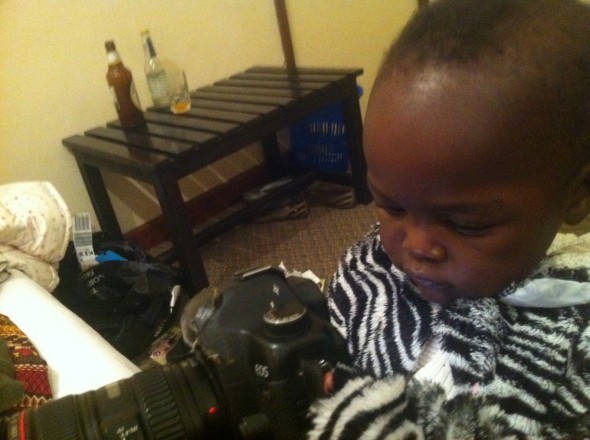
…I jumped on a bus from Nairobi heading south.
It took about some hours to get to the border of Tanzania, but was a fairly smooth process to get across, (just needed US$50 for the VISA, although they accepted by 5000ksh) – and then another 6 hours travelling to the city of Arusha.
I got off the bus, and (I presume thanks to Merculine who had braided my hair) everyone started speaking to me in Swahili which was pretty funny. I must have looked like some crazy expat who wasn’t rich enough to hire someone to carry my bags. But it was nice and the locals were really cool. That’s when I met my next host, Kalanga.
After travelling from Nakuru – Nairobi – Arusha I was pretty exhausted, but that was NOTHING compared to the 4WD trip I was about to undertake. Oh, sorry, no, not a 4WD, just some big battered vehicle on roads which needed a 4WD.
It was quite an adventure in the true essence of the word, and after another 6 hours of sand, dust, rocks and holding on for dear life – I arrived at the Maasai village of Loibersoit in the dead of the night. But that moment, I have to say, as I stepped out of the car to be greeted by an entire family of such beautiful and exotic people, not a sound to be heard except for the gentle charms of their glistening jewellery and soft laughter, and looking up to see the most stunning night sky, and then to be welcomed and invited into their traditional home which overflowed with warmth, drinking fragrant tea by candlelight, listening to the first wife and mother affectionately speak to me knowing I would not understand a single word, smiling… after such a long journey, will stay with me for life.
At that moment, with this family, I think I fell a little bit for Africa.
I think the hardest thing about filmmaking is that you are not a tourist, nor a traveller, but a labourer with a purpose and a task to fulfil. If I wasn’t this, I could have easily stayed in that headspace soaking up an entirely new culture, language and way of life for my own fulfilment.
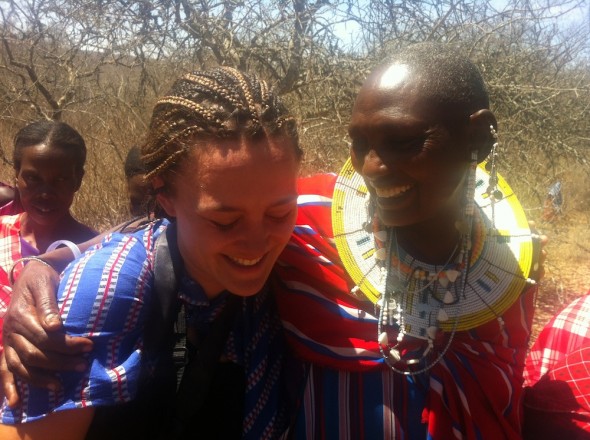
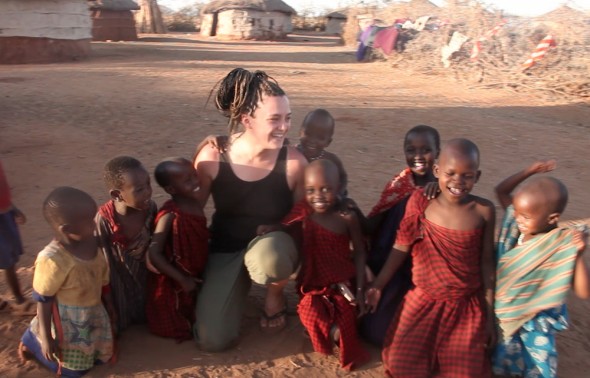
But as beautiful and proud as these people were, one thing passing travellers don’t see, is that they need help.
Living in such remote areas of Africa is always difficult to sustain a large family. But the biggest problem they have is water. The situation in Loiborsoit was sobering, not that you could tell from the beautiful smiles on their faces.
They have a few water holes in the area, however they are all dependant on an ugly, old, broken & polluting generator to pump the water up for use. These generators break constantly, and there is no-one in the community who knows how to fix them, let alone able to find spare parts. Also, they obviously rely on diesel to run – which, having just completed the 5 hour trip to the nearest town, is a terrible inconvenience. Let alone expensive long term.
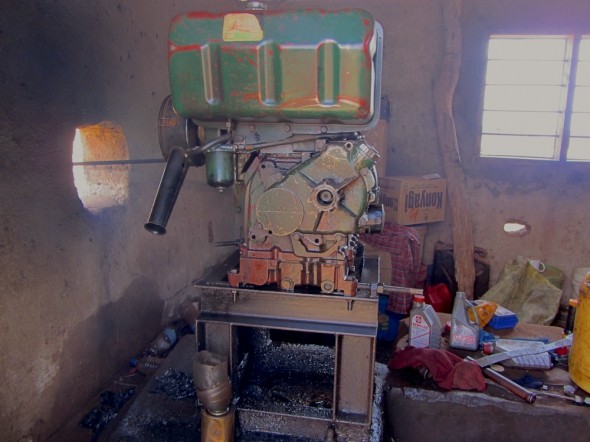
The local women and children have to line up, sometimes for a few days, just to fetch one canister of water for their family.
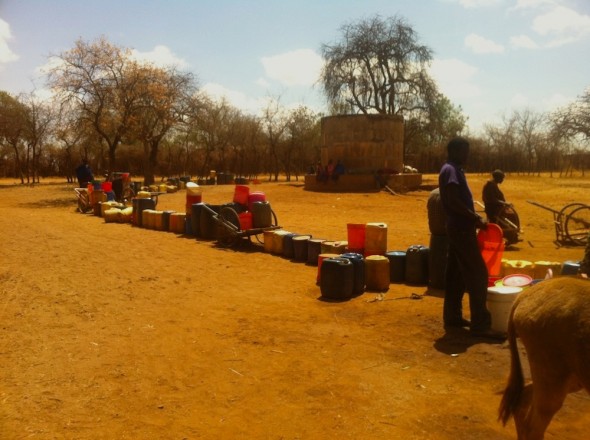
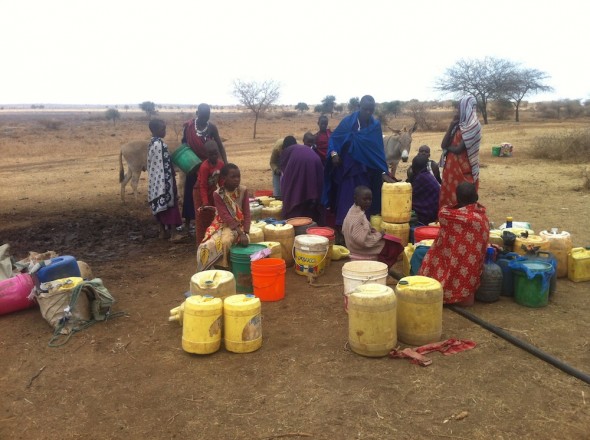
Luckily we had bicycles, so travelling to the water pumps wasn’t too difficult, but most women walk for hours.
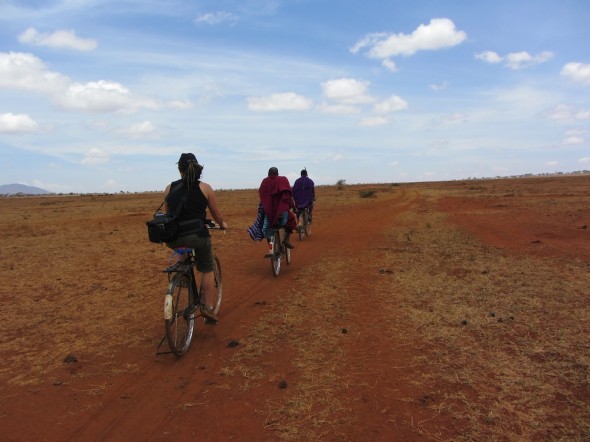
In the dry season, when water is most needed, the sun is shining brightest. The simple solution here, is Solar.
Solar water pumps may be somewhat expensive in the short term, but essential for the future success of these communities. TOPtoTOP want’s to appeal to all their dedicated supporters world-wide, to help fund the project. I was here in Loiborsot to film the current situation.
It wasn’t just a solar project that TOPtoTOP was involved in however, they also had already installed a number of massive water tanks in the local school, to help save and collect water during the raining season. The teachers and children I interviewed were so happy with the outcomes of these new tanks, however, being at the peak of the hot season, they had already dried up.
Suffering is sometimes hard to see, especially when the people are empowered and proud. The Maasai culture is centuries old, and a lot of the other african cultures are actually scared of them. They are warriors. But, if you look closely, it doesn’t take long to see the effect of poverty.
For me, this happened in the local school.
I have filmed with a number of NGO organisations, but I am in no-way desensitised to the effects of poverty. And when one of the young local girls, perhaps 13 years old, collapsed to the hard ground, right in front of me, I realised just how serious the situation was. Food and water. That’s all they’re trying to secure.
Her friends carried her away under the shade of a tree, and I was told not to interfere.
I filmed the project, and as we were leaving, I saw her sitting by that same tree, and saw that she had regained consciousness. I was both relieved and heartbroken.
Working in social development, or in my case filmmaking for social causes, you are always in a constant state of emotional opposites; proud of what you’re achieving, ashamed at what you can’t achieve, and inspired or perplexed by humanities ability to destroy, rebuild and heal.
I think what I am taking away from these projects, and my time working with MyClimate, is that seemingly complex problems can be solved by simple technologies.
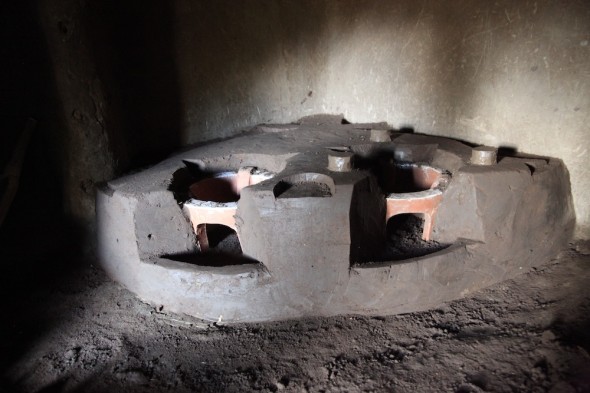
More specifically, I believe everyone has the ability to invest their time and energy into simplifying their lives enough to be sustainable, while helping to improve the technology of their neighbours, finding a balance in our delicate eco-system, here on home.
So right now, with these thoughts in mind here in Singapore (the complete juxtaposition of the African Continent), I am preparing on my next adventure, back to Timor-Leste. However I carry with me fond memories of my friends in Kenya & Tanzania…
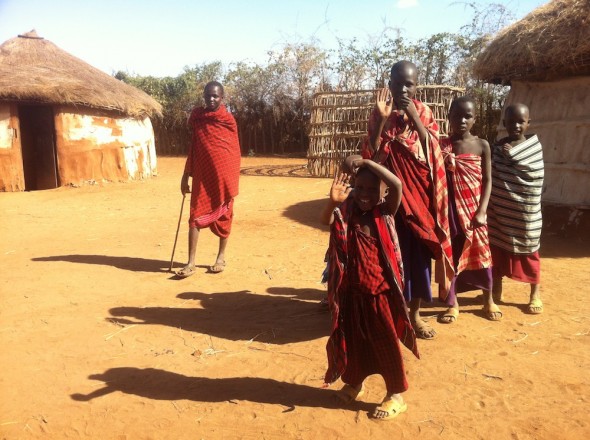
I want to leave you, in LateNite style, with an incredible trailer for one of my favourite films, which ironically is not a documentary – but is so utterly inspiring and believable I really wish it was. Hopefully I can make a documentary like this one day.
Adios ~
UPDATE (23/11/2012):
Within 14 days of the short appeal video by LateNite Films being released to YouTube, keen investors contacted the TOPtoTOP expedition and offered to fund the total amount to implement the much needed solar technology.
You can see the video below, which was voluntarily made in just 2 days for the local community.
Film mission accomplished.
Onwards & Upwards!